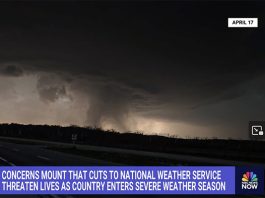“This is so much more than just stewardship of the land. It’s about modeling the behaviors that we all should have, whether we’re a homeowner in town, a 10-acre ranchette, or a 10,000 acre ranch.”
– Tanse Herrmann, USDA Natural Resources Conservation Service
 When Gary and Amy Cammack purchased 927 acres of rangeland in 1984, it bore the scars of grazing that began 100 years ago. High stocking rates had reduced plant diversity and it was a mono-culture of needle and thread grass. There was also only one source of water and trailing to it had caused erosion in the sandy soils. Wildlife, something important to the Cammacks, were non-existent on the ranch.
When Gary and Amy Cammack purchased 927 acres of rangeland in 1984, it bore the scars of grazing that began 100 years ago. High stocking rates had reduced plant diversity and it was a mono-culture of needle and thread grass. There was also only one source of water and trailing to it had caused erosion in the sandy soils. Wildlife, something important to the Cammacks, were non-existent on the ranch.
Visiting the ranch today, you might never know that was how they started. Today, their land sustains 600 beef cow-calf pairs. Soil health, water infiltration, grass growth and beef production have benefited from practicing rotational grazing. And in honor of all the work they did to get to this point, the Cammack family was presented the 2018 South Dakota Leopold Conservation Award.
This 6:26 video takes us on a tour of the Cammack Ranch and gives us some insight into the family and their philosophy.
 Gary remembers how they started. “We contacted the NRCS in Sturgis, I believe it was Darrell Vig was the conservationist at the time, and he really helped us out – helped us put together a plan for a water system, for cross fencing, the start of planting trees.”
Gary remembers how they started. “We contacted the NRCS in Sturgis, I believe it was Darrell Vig was the conservationist at the time, and he really helped us out – helped us put together a plan for a water system, for cross fencing, the start of planting trees.”
Over the three decades the Cammacks have lived and worked on their ranch, they’ve installed 20 miles of cross-fencing and more than 25 miles of water pipeline. With an eye on enhancing efficiency, they utilize crossbreeding within their herd and moved their calving season to later in the spring to better match their resources with what Mother Nature provides.
For winter cover on the range, they constructed v-shaped windbreaks from secondary steel. Each is strategically placed to minimize the herd’s traffic over riparian areas. Additional wind protection (and wildlife habitat) is provided by the more than 30,000 trees the Cammacks have planted over three decades. The Cammacks built their own tree planter with a water jet system to plant willow and cottonwood shoots. Once planted, they fence out the area to protect the tree shoots.
Their other innovations include a bale processor that cuts hay inside bales shorter. It’s better for cattle consumption and they waste less of it, as long, discarded stems can kill grass. When harvesting hay, they use a driving pattern that allows wildlife to flush and escape.
Grandson Reed Cammack says, “There’s a misconception among people that grazing cattle is not good for the environment.” What he sees is intact ecosystems that haven’t been plowed up to grow row crops precisely because they’ve been grazed and are producing revenue while protecting wildlife and plants and the ecosystems they need to survive and thrive.
About the Leopold Conservation Award, Gary says, “The award is not just a plaque that you hang on the wall. It is accepting the responsibility to continue to spread the word and to share the things you’ve learned over the years – share the knowledge, the successes, the failures. It’s about leaving it better than you found it.”





Very nice article. Kudos to the Cammacks…!
Sturgis could become a tourist destination for rangeland management as well as motorcycle rallies.
I love this idea, Curt!!
Comments are closed.